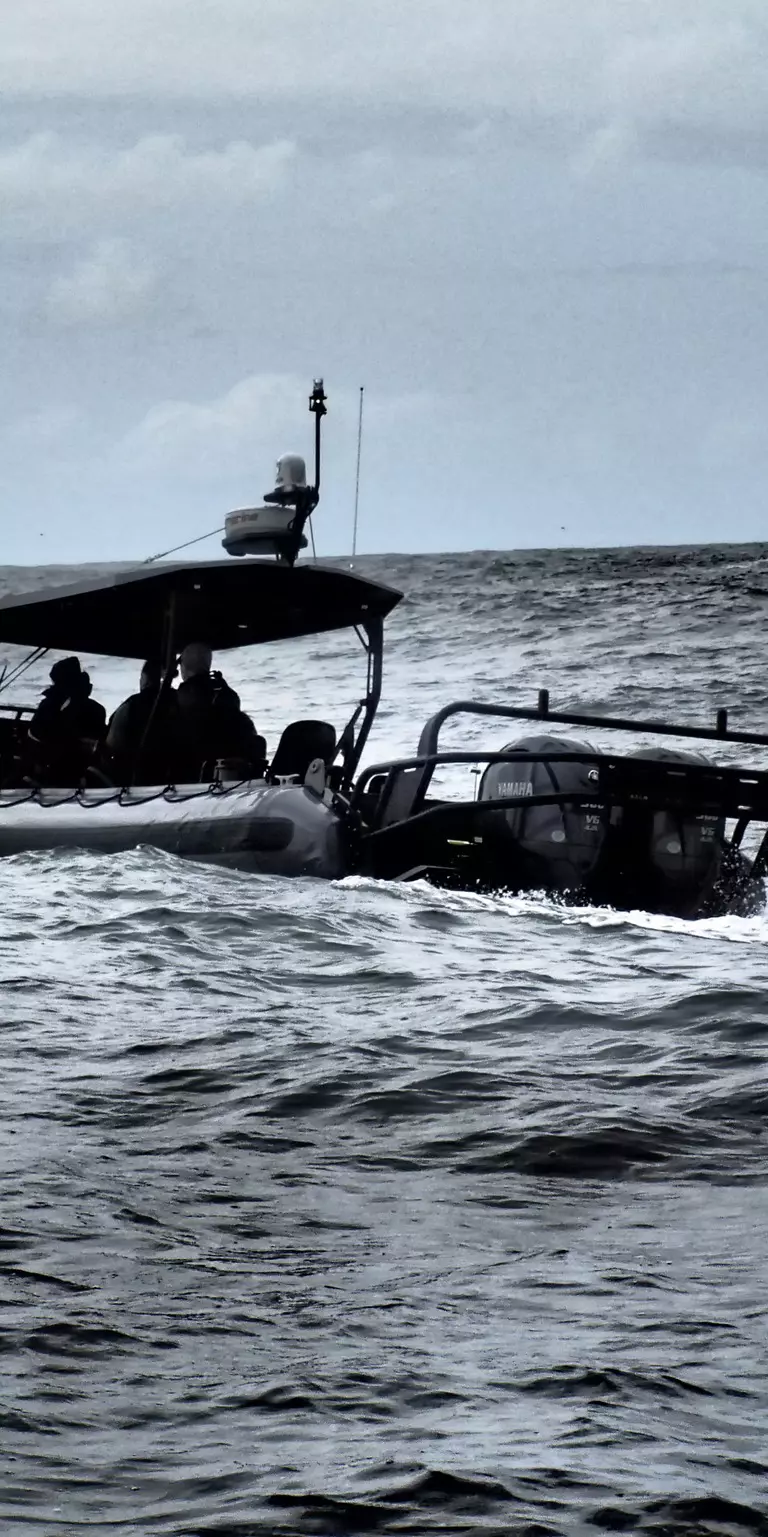
04 June 2025
We look at the different types of stabilization available on FLIR cameras and how they can benefit you.
If you’ve spent time on the water, you know that no boat or ship remains perfectly steady. Wind, waves, and wakes create constant movement, making it difficult to maintain a clear view through a marine camera system. Without stabilization, vessel motion can cause the camera image to bounce and shift, reducing visibility and precision.
FLIR Marine cameras counteract vessel motion using a sophisticated gimbal system with 2-axis mechanical gyro stabilization—a standard feature on all M300, M400, and M500-series cameras. Equipped with solid-state rate gyro sensors, these cameras detect the slightest movements and automatically adjust their pan and tilt mechanisms using precision servos. This intelligent system keeps the camera steady, ensuring clear visuals even in rough conditions.
Vertical stabilization corrects for pitching motions, keeping the horizon steady as your boat rises and falls with the waves. This feature proves especially valuable when using digital and optical zoom, since even slight movement is exaggerated at long distances.
For onboard observations, such as monitoring crew activity at the bow, vertical stabilization can be instantly switched off, allowing the camera to move naturally with the vessel.
Horizontal stabilization maintains the camera’s focus on a target even as the vessel changes heading. This capability is indispensable for marine firefighting units, enabling thermal cameras to remain locked onto a fire scene while boats maneuver for optimal positioning.
Simply point the camera at your subject, activate horizontal stabilization, and let the system do the rest. If needed, the operator can manually shift the view to another bearing, and the camera will immediately re-lock. When departing a scene, disable horizontal stabilization and return the camera back to its forward-facing position for underway navigation.

The M232 model is a favorite among recreational boaters venturing out after dark because of its compact size and accessibility. While its performance is excellent in calm waters, the lack of built-in gyro stabilization can present challenges in rough conditions.
To address this, Raymarine’s Axiom chartplotters, when paired with an AR200 Augmented Reality sensor module, provide digital video stabilization. The AR200 uses a built-in rate gyro and high-precision GNSS receiver to track pitch, roll, and yaw, transmitting real-time corrections to the Axiom chartplotter. While not as advanced as mechanical stabilization, this digital solution significantly improves image stability.
Additionally, when used with the AR200 and Axiom the M232 camera feed can overlay Augmented Reality data, including AIS targets, navigation aids, and waypoints, further enhancing situational awareness.
Reliable stabilization ensures crisp, clear imaging in any sea conditions. Whether for high-performance vessels, emergency responders, or commercial shipping, stabilization is a must-have feature for safer, more effective navigation.
